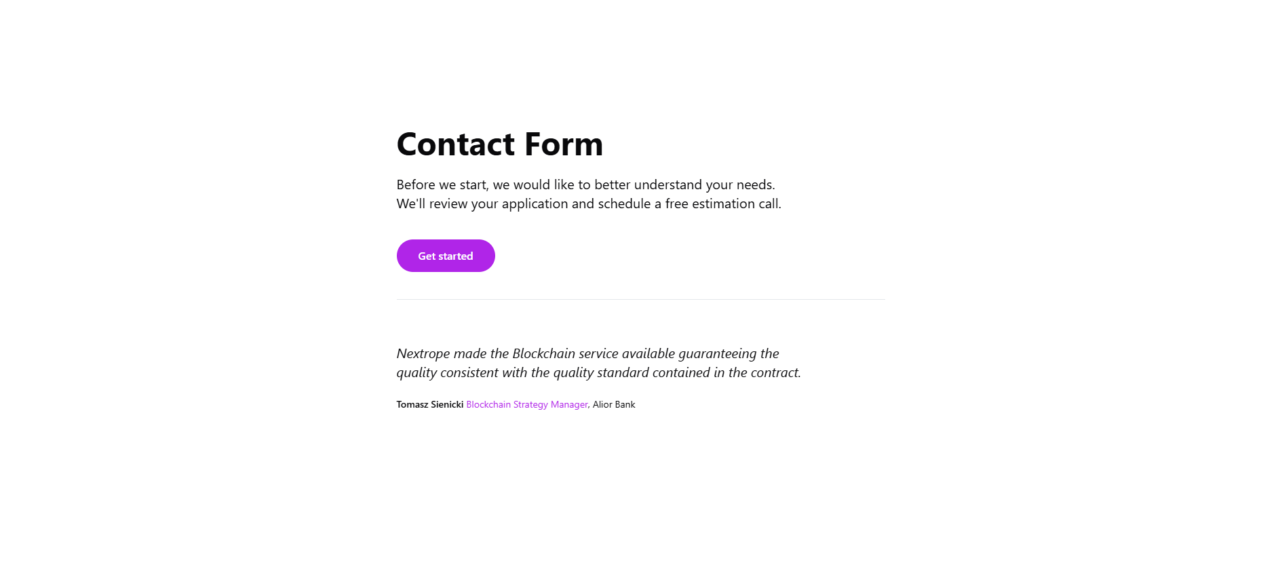How does blockchain help us to solve the problems faced by the modern health care? In an interview with Nextrope Muffie Fulton, Sr. Director of Pharma Solutions at Chronicled, an American company behind MediLedger, explains why the use of this technology is a breakthrough in medicine distribution.
Launched in 2017, MediLedger is building a decentralised and configurable drug supply chain management system based on blockchain technology. It introduces innovative solutions for regulating product traceability and controlling all processes related to the supply chain.
Medi Ledger brings together leading players in the pharmaceutical industry to form an industry-wide network of permissioned blockchains based on open standards and specifications. It has been developed to give pharmaceutical partners the opportunity to keep pace with rapidly changing regulations and to find better ways to cooperate within a common ecosystem.
Why do you think the pharmaceutical industry needs Blockchain technology and how is it superior to current solutions?
Two of the biggest concerns in the health care are safety and privacy. Patient and drug safety are always top of mind, and the need to secure the drug supply chain is paramount.
Data privacy is important for individual patients, but it is also very important for companies. Companies need to ensure their internal data and business intelligence data remain secure, while needing to share certain pieces of data with their trading partners.
Blockchain as a component in a private, permissioned, industry wide network is a great tool to allow companies to share information in a directed, confidential manner.
Shared, yet confidential, industry master data has the power to dramaticall improve the efficiency of many processes including supply chain, finance, procurement, and clinical trials.
Do you think that in the near future the demand for solutions enabling tracking drug supply chains will increase?
Certainly. Companies are implementing different pieces of the Drug Supply Chain Securities Act and are seeing the value of visibility. In addition, companies want to get more value out of regulatory driven implementations. We get requests daily from people and companies who want to build on the functionality from product verification to do everything from temperaturę tracking to dispeners who want to start verifying druges even before the DSCSA deadline because they see the business value. Also, as we near the deadlines for the full DSCSA confidential change of ownership requirements in 2023, patients will begin to learn about the fact that the drug supply chain is being more closely monitored and will want to share in that visibility. Right now they can see what step of the supply their book is in while it’s being delivered to tchem, and they are going to expect to have that same level of visibility for something as important as their medicines.
How do Chronicled solutions protect consumers and producers from counterfeit and diversion?
Our Product Verification Solution connects distributors and manufacturers, allowing distributors to scan the barcode on a pharmaceutical and the manufacturer can respond in under a second, verifying that the product identifiers are the same as the manufacturer created. If there i sany discrepancy, the distributor is able to isolate the product and notify the manufacturer. This helps to identify counterfeit product in the supply chain and eliminate it.
In your opinion, which business models can benefit the most from blockchian implementation?
Any business that is data intensive and trade intensive will benefit from blockchain, especially where privacy and interdependent processes within the industry are paramount.
What are the biggest challenges while developing a Blockchain products?
In pharma, one of the biggest challenges is the understanding of blockchain as a technology and the willingness to implement a solution that is seen as unproven. This is changing quickly, as many large companies now have innovation groups, or even specific blockchain groups, within their IT departments. In addition, companies are starting to understand that blockchain is simply a tool which opens up a world of possibilities in solving business problems.
Do you have any advice to entrepreneurs just starting in the Blockchain industry.
Focus on solutions to real business problems, and not the shiny new technology.
What is your vision for Blockchain development as an industry in the next 5 years?
We foresee industry wide alignment and the next phase of ERP becoming IRP, Industry Resource Planning. With the ability to strategically share confidential data, get alignment on and enforcement of business rules across the industry, and having the ability to have an entire industry in a shared yet private network, frictionless trade will result in efficiencies and savings for business and patients.
 en
en  pl
pl 












